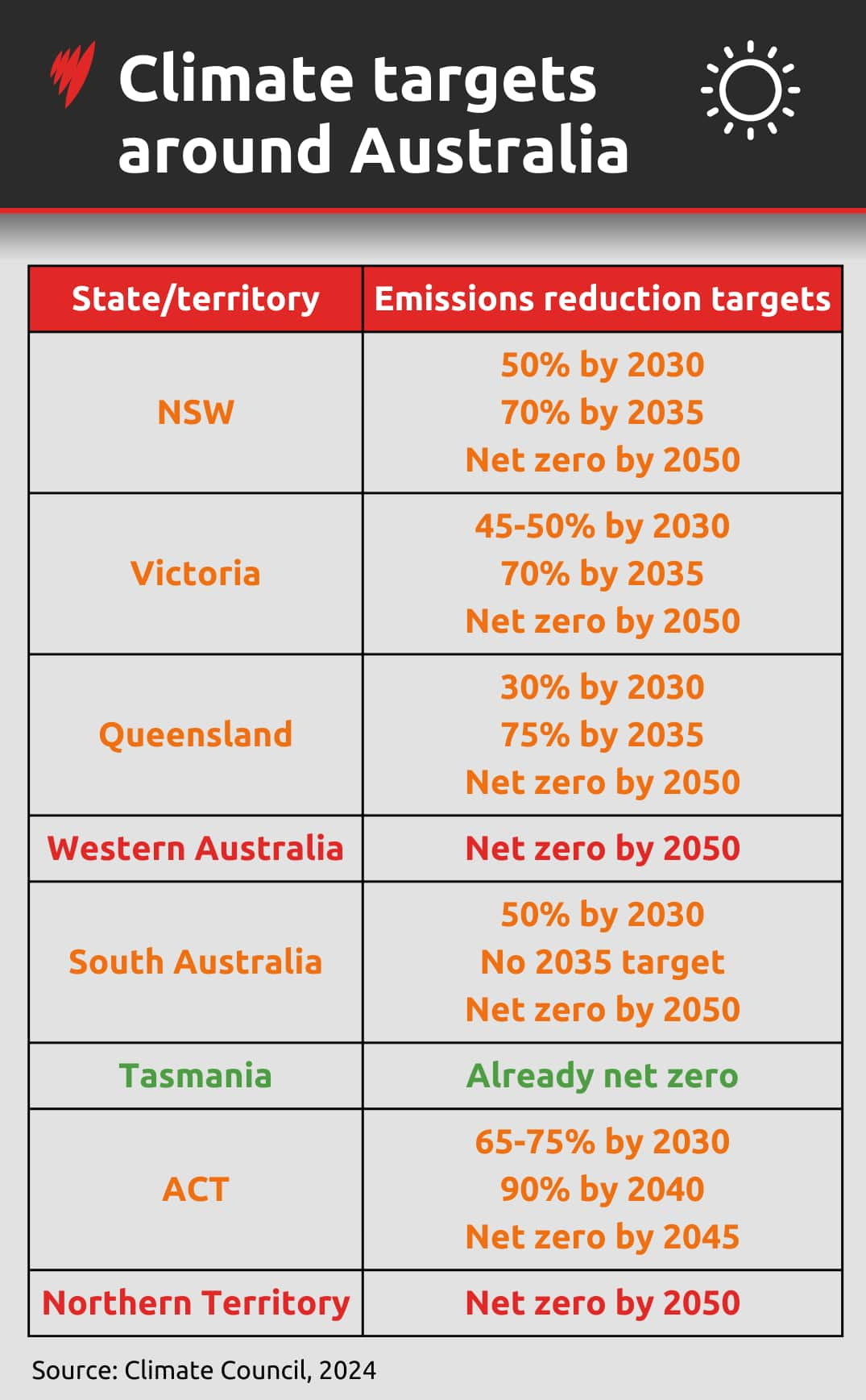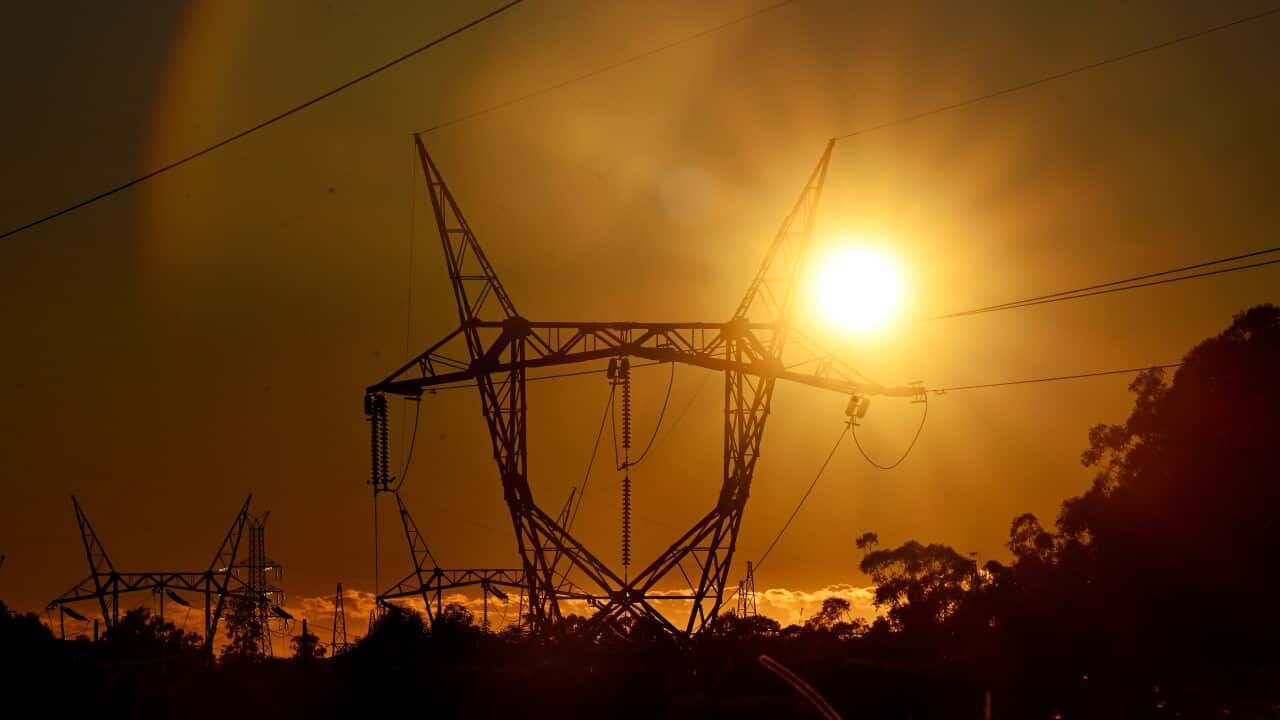Two parts of Australia are “undermining” national efforts to embrace renewable energy and cut greenhouse gas emissions, according to a new report from the Climate Council.
The independent climate science organisation compared each state and territory’s progress against a series of metrics to measure their shifts to clean energy sources and efforts to reduce emissions.
It found “impressive progress” had been made in recent years, with embracing renewable energy as a means of cutting climate pollution becoming “a top priority” for most jurisdictions.
The report noted Australia had doubled its share of renewables in the national electricity grid in less than six years, largely due to the actions of states and territories.
But it warned the nation’s westernmost state and northernmost territory were putting that progress at risk.
“Western Australia and keep expanding and approving highly polluting coal and gas projects — seriously undermining our national efforts to cut climate pollution and protect Australians from worsening unnatural disasters,” the report said.
It noted WA was burning more gas to generate electricity than any other jurisdiction, while the NT would struggle to meet its emissions reduction target unless its government took urgent action.
Climate Council CEO Amanda McKenzie said it was “the critical decade” for cutting emissions — something most states and territories had clearly grasped — but there was “plenty of work still to do”.
“Our kids’ futures depend on the choices we make now, and there is no time to waste,” she said in a statement.
How much electricity in Australia comes from renewable sources?
Around 40 per cent of electricity in Australia’s main national grid came from renewables in the 12 months to August 2024, according to Climate Council analysis of OpenNEM data.
The ACT had the largest share with 100 per cent of its electricity generated from renewables, closely followed by Tasmanian with 98 per cent.
South Australia was the only other jurisdiction where renewables made up more than half (74 per cent) of its electricity sources.
At just 7 per cent, the North Territory had the lowest proportion of electricity from renewables, followed by Western Australia with 18 per cent.
The ACT and Tasmania are leading the country when it comes to renewable electricity generation. Source: SBS News
What are each state and territory’s climate targets?
The federal government has a legislated target of net zero greenhouse gas emissions by 2050, with .
Tasmania reached net zero emissions in 2013 and is now working to generate double its renewable energy needs and export the excess to the mainland.
But like in most other climate-related areas, WA and the NT are at the back of the pack.
While they both have a net zero by 2050 target, they don’t have any interim commitments to ensure it’s reached.
Each Australian state and territory aims to reach net zero emissions by 2050 at the latest. Source: SBS News
What the states and territories are leading in climate-wise
This is where each state and territory is leading the nation on climate action, according to the Climate Council’s report:
Queensland: Rooftop solar panels
WA: Batteries and critical minerals research
The ACT: Electric vehicles
The NT: N/A
What they need to work on
While much of the nation has taken positive action, the report noted several areas the states and territories still need to work on.
NSW‘s approvals of renewable energy projects, big batteries, and transmission lines are taking two to three times longer than other states.
Victoria is lagging behind most other jurisdictions in its uptake of rooftop solar and battery storage.
Queensland needs to boost household batteries and increase shared transport use.
WA can improve its standing in the nation by increasing its share of renewables.
SA should call time on its support of the gas industry.
Tasmania needs to increase the number of people using shared transport.
The ACT also has shared transport issues, with Canberra ranking last of all eight capital cities.
The NT needs to improve its commitment to cutting emissions and reducing support for new gas projects.


